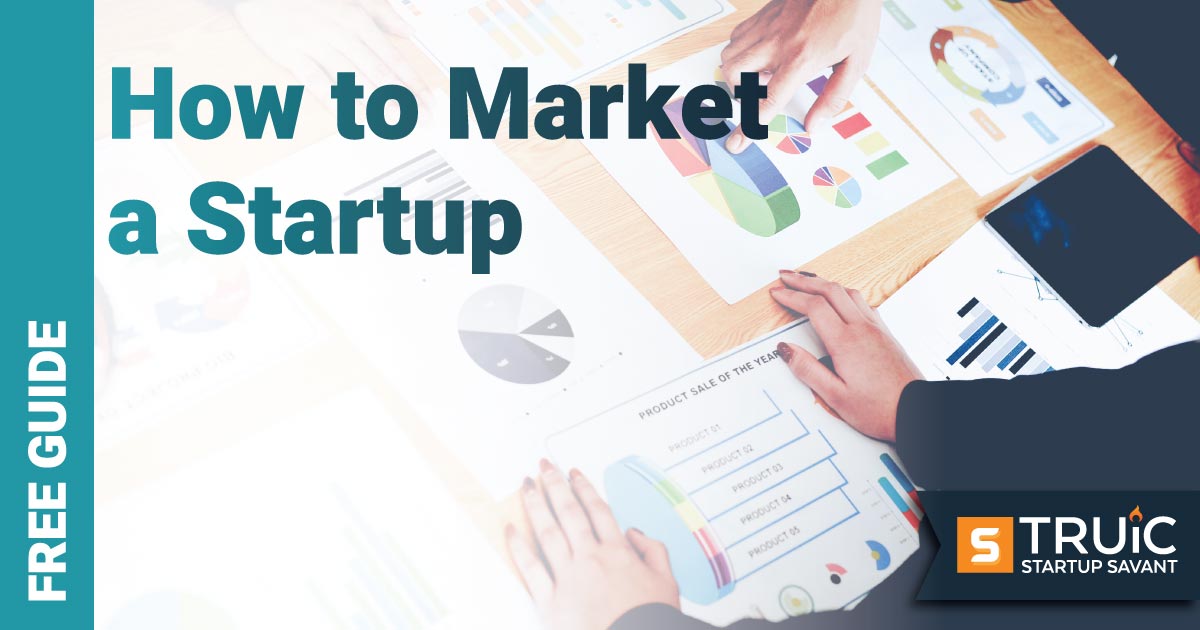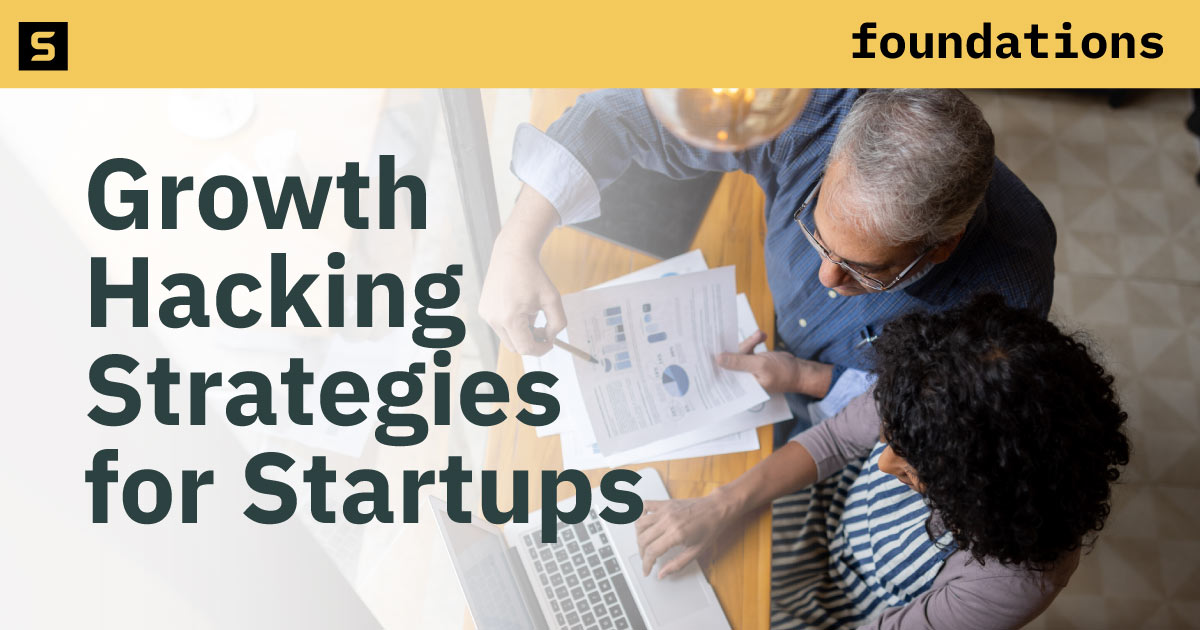What Is Growth Hacking?

Last Updated: By Michaela Dale
In the competitive arena of startups, scaling with limited resources isn't just a goal — it's a necessity. Enter growth hacking: a blend of creativity, analytics, and strategic experimentation aimed at skyrocketing growth.
This guide dives deep into the growth hacker mindset, essential strategies, and the tools that make it all possible. Whether you're aiming to scale your startup or simply curious about how growth hacking fuels the rise of businesses, you're about to uncover the secrets behind turning potential into exponential growth.
Guide to Growth Hacking
Growth hacking works by combining marketing strategy, technology, and data analytics aimed at fueling rapid growth in startups. Unlike traditional marketing, which focuses on broad strategies across various channels, growth marketing is about finding a creative, cost-effective hack that leads to substantial business growth in a short period.
It's a mindset that leverages digital marketing techniques, product iterations, and user engagement tactics to significantly increase a company's customer base and revenue — often with limited resources.
The Growth Hacking Mindset
The growth hacker mindset is characterized by an insatiable curiosity, creativity, and an analytical approach to growth. Growth marketers must look beyond traditional marketing strategies and think outside the box to find scalable, cost-effective ways to grow a business.
Additionally, a growth marketer must see opportunities in challenges, test hypotheses continuously, and use data to make strategic decisions. This mindset is not confined to marketers alone and permeates across the entire organization, encouraging a culture of innovation and rapid experimentation.
Key Components of Growth Hacking Techniques
Growth hacking is built on a foundation of key components that drive its success. These include:
Product-Market Fit: This ensures a product fulfills a real need in the market and is something customers are eager to use and purchase.
Analytical Thinking: This uses data analytics to guide decisions, measure performance, and optimize strategies for better results.
User-Centric Approach: This focuses on delivering value to the users, enhancing their experience, and engaging them in ways that promote retention and advocacy.
The Growth Hacking Framework
The growth hacking process is a cyclical journey of hypothesis, experimentation, measurement, and iteration. It starts with setting clear, achievable goals followed by brainstorming growth hacks that can potentially achieve these goals. Growth marketers then turn these ideas into experiments they can rigorously test and measure.
The AARRR Framework
The AARRR framework, also known as the Pirate Metrics, is a cornerstone of the growth hacking process. It represents five key stages of the user journey: Acquisition, Activation, Retention, Referral, and Revenue.
This framework guides growth hackers in focusing their efforts and metrics on the most impactful areas for growth, ensuring strategies align with moving users effectively through the funnel toward becoming loyal, paying customers.
Setting Up Growth Experiments
Setting up growth experiments involves identifying growth opportunities, formulating hypotheses, designing experiments, executing them, and then analyzing the results. This systematic approach allows startups to validate assumptions, learn from failures, and scale successes. The key to this process is a willingness to fail fast, learn quickly, and adapt strategies based on real-world data.
Tools and Technologies for Growth Hacking
The growth hacker's toolkit includes a variety of tools and technologies designed to automate tasks, gather and analyze data, and enhance customer engagement. These range from analytics platforms like Google Analytics to automation tools such as HubSpot to marketing tools, such as Mailchimp. Leveraging these tools effectively allows growth hackers to spend more time on strategy and less on manual tasks, accelerating the growth hacking cycle.
Growth Hacking Strategies
There are several growth-hacking strategies startups can leverage to rapidly grow their business from content marketing to improving the user experience. Below are the steps for effective growth hacking, using the AARRR framework mentioned above.
Acquisition Strategies
Acquisition is the first step in a customer's journey in which startups attract new users to their product or service. Effective acquisition strategies are essential for building a foundation of users who can later become loyal customers. These strategies vary widely from digital marketing to more unorthodox approaches.
SEO and Content Marketing
Search engine optimization (SEO) and content marketing work hand in hand to increase a startup’s visibility and attract traffic to its website. By optimizing content for relevant keywords and creating valuable, engaging content, startups can rank higher in search engine results, making it easier for potential customers to find them. This long-term strategy not only builds brand authority, but also attracts a steady stream of organic traffic.
Social Media Hacking
Social media hacking involves using social media platforms in innovative ways to promote your product or service. This could include viral marketing campaigns, influencer marketing campaigns, or engaging with communities in your niche market. The goal is to create buzz and drive traffic back to your website or product, utilizing the extensive reach and networking capabilities of social media.
Viral Marketing Techniques
Viral marketing techniques aim to create content or promotions that naturally encourage sharing among users, rapidly increasing brand exposure. Whether it's through compelling videos, engaging social media posts, or interactive online challenges, the goal is to spark interest and encourage widespread sharing that leverages the networks of individuals to reach a larger audience quickly.
Activation Tactics
Once your business acquires users, the next step is activation — encouraging them to take a desired action that signifies engagement with your product or service. This might mean signing up for a trial, making a purchase, or simply using the product. Effective activation strategies are crucial for converting interested visitors into active users.
Landing Page Optimization
The landing page is often the first point of interaction between your product and potential customers. Optimizing this page is crucial for converting visitors into leads or customers. This involves testing different elements, such as headlines, call-to-action (CTAs), images, and the overall layout, to increase the conversion rate. A well-optimized landing page communicates the value proposition of your product or service clearly and guides visitors toward taking the desired action.
Onboarding Experience Enhancement
Enhancing the onboarding experience is about making the adoption and initial use of your product as smooth and valuable as possible for new users. A good onboarding process educates users about your product's key features and benefits, encouraging immediate engagement. Personalized guides, interactive tutorials, and targeted support can help new users find value in your product faster, increasing the chances of retention.
Retention Strategies
Retention strategies focus on keeping your customers engaged and interested in your product over time. High retention rates are indicative of a valuable, satisfying product and are crucial for sustainable growth. Effective retention involves understanding your customers' needs, providing continuous value, and maintaining a positive user experience.
Email Marketing Campaigns
Email marketing remains one of the most effective tools for retaining customers. Through personalized emails, you can keep your users informed about new features, updates, and content. Well-crafted emails can re-engage dormant users, encourage active users to explore new aspects of your product, and provide valuable insights that enhance the user experience.
Customer Service Excellence
Exceptional customer service is a powerful retention tool. By addressing concerns promptly and effectively, you can turn potentially negative experiences into positive ones, building loyalty and trust. Offering multiple channels for support, including live chat, email, and social media, ensures users can easily reach out for help when needed.
Product Updates and Feature Announcements
Keeping your user base informed about product updates and new features is a crucial retention strategy. Regular announcements not only keep your product top of mind, but also demonstrate continuous improvement and your responsiveness to user feedback. This communication can take many forms — from email newsletters and in-app notifications to social media and blog posts.
The key is to highlight the benefits of these updates or new features, showing how they enhance the user experience or solve additional problems for the customer. Engaging users with this content can reinvigorate their interest and investment in your product, encouraging continued use and loyalty.
Referral Strategies
Referral growth hacking strategies are essential for leveraging your current users to attract new ones. This involves creating a referral program that incentivizes existing users to share your product or service with their network. The incentives can range from discounts, free upgrades, or exclusive access to new features, aimed at encouraging users to become advocates for your brand.
Designing an Irresistible Referral Program
The cornerstone of referral growth hacking is a referral program that feels rewarding to both the referrer and the referee. Offering tangible rewards such as cash back, service credits, or access to premium features for each successful referral can create a viral growth loop. It’s crucial to ensure the referral process is as seamless as possible, integrating with social media and communication platforms to facilitate easy sharing.
Personalizing the Referral Experience
Customization plays a critical role in the success of referral strategies. Personalizing referral messages, rewards, and landing pages to match the preferences and behaviors of your users can significantly increase referral rates. Then, use data analytics to understand your users’ preferences and create more targeted campaigns.
Revenue Growth Strategies
As a startup founder, your ultimate goal involves attracting and converting users into a steady stream of revenue. Revenue growth strategies involve optimizing your pricing models, introducing new product tiers, and finding innovative ways to increase the lifetime value of each customer. This might include developing premium features, bundling products, or offering subscription services. Analyzing customer behavior and feedback will guide you in tailoring these strategies to meet users’ needs and willingness to pay, ensuring your user base growth translates directly into financial growth for your company.
Adjusting Pricing Models
Selecting the right pricing model is pivotal to your startup's success. Whether you opt for a freemium model, subscription-based pricing, or a one-time purchase structure, your choice should align with your target market's expectations and the perceived value of your product.
Consider tiered pricing to cater to different segments of your market, offering basic to premium features at varying price points. This strategy can maximize revenue opportunities across diverse customer needs and willingness to pay.
Upselling and Cross-Selling Techniques
Upselling and cross-selling are powerful techniques to increase your average revenue per user (ARPU). Upselling encourages customers to purchase a more expensive version of the product they are considering while cross-selling suggests complementary products or services. Both strategies rely on a deep understanding of customer needs and purchasing behavior.
Implementing these techniques effectively requires timing offers to coincide with user milestones or when the customer is most engaged with your product. Personalization is key here because tailored suggestions based on user behavior and preferences are more likely to result in additional sales.
Growth Hacking Examples
Some of the top tech companies have used growth hacks to grow their customer base and increase brand awareness. These are a few of the most notable examples of growth-hacking strategies from Dropbox, Airbnb, and LinkedIn.
Dropbox
Dropbox is a classic example of effective growth hacking through a referral program. To expand their user base, Dropbox incentivized current users by offering additional storage space for both the referrer and the referee upon a successful signup. This simple, yet powerful approach leveraged existing users to generate new ones, drastically reducing customer acquisition costs and rapidly scaling their user base.
Airbnb
Airbnb's growth hacking involved tapping into Craigslist's large user base to attract more listings. They created a tool that allowed Airbnb hosts to cross-post their listings on Craigslist with ease even though Craigslist did not have an API. This strategy provided Airbnb listings with immense exposure and drew significant traffic from Craigslist — a platform with a vast and established user base looking for accommodation. This move not only amplified their market presence, but also accelerated their growth by connecting with an audience actively seeking the kind of value Airbnb offers.
LinkedIn's growth strategy focused on creating a highly valuable product that encouraged users to invite their professional contacts. Early on, LinkedIn understood the importance of network effects in increasing the platform's value. They encouraged new users to upload their contact lists and send invitations to join LinkedIn, expanding the network rapidly.
Conclusion
Growth hacking is not just about a set of tactics; it's a mindset that focuses on rapid growth through creativity, analytical thinking, and social metrics. By understanding your audience's needs and prioritizing experimentation, you can uncover powerful strategies that propel your startup forward. Remember, the essence of growth hacking lies in agility and the willingness to iterate based on data-driven insights.
Whether it's through referral programs, leveraging existing platforms, or building a product that inherently encourages growth, the key is to find what resonates with your target users and scale it effectively. Keep learning, keep experimenting, and let your growth-hacking journey drive your startup to new heights.


